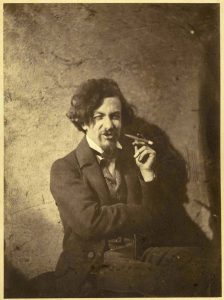ARTISTS
Le Gray is well known for his technical innovations and distinctive photographs as well as for his teaching of other notable photographers. His architectural, landscape and portrait photographs were influential and he was an important contributor to the development of the wax paper negative. In the 1850s the photographer started using collodion-on-glass negatives in preference to paper negatives in order to achieve increased sharpness of the image
and faster exposure times.
His students included Charles Nègre, Henri Le Secq, Nadar, Olympe Aguado, and Maxime Du Camp. In 1851, he became one of the first five photographers hired for the Missions Héliographiques to document French monuments and buildings. Despite his success, he became bankrupt in 1860. He left his life in France for travels in Italy, before settling in Egypt where he continued to take photographs.
Selected exhibitions:
2003
“Sea and Sky: Photographs by Gustave Le Gray 1856-1857”, Victoria and Albert Museum, London, UK
2002
“Gustave Le Gray, Photographer”, Getty Center, Los Angeles, USA
1999
“Museum as Muse: Artists Reflect”, Museum of Modern Art, New York, USA
1998
“Beyond the Edges: An Insider’s Look at Early Photographs”, The Metropolitan Museum of Art, New York, USA
1987
“The Photography of Gustave Le Gray”, Art Institute of Chicago, Chicago, USA






 +49 89 29 73 42
+49 89 29 73 42